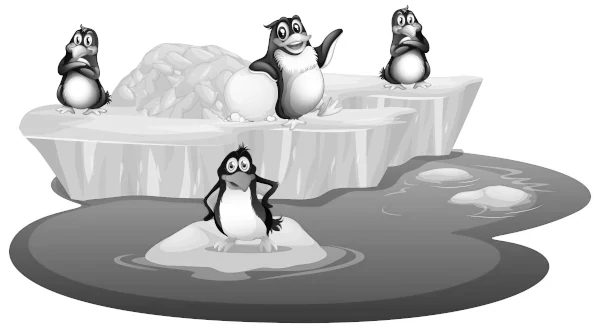
How Climate Change Affects Penguin Populations?
Climate change is a significant issue in the world today, and it is affecting our world significantly. Many animals are affected by climate change, and one of them is penguin. Penguins are fascinating creatures that rely on the cold and icy environment of the Antarctic region for their survival. However, the impact of climate change is causing significant changes in their habitat, food sources, and overall population.
Definition of climate change
Climate change refers to a change in the state of the climate that can be identified by changes in the mean and/or the variability of its properties and that persists for an extended period, typically decades or longer, whether due to natural variability or as a result of human activity
Intergovernmental Panel on Climate Change (IPCC). (2014). Climate Change 2014: Synthesis Report. Contribution of Working Groups I, II and III to the Fifth Assessment Report of the Intergovernmental Panel on Climate Change [Core Writing Team, R.K. Pachauri and L.A. Meyer (eds.)]. IPCC, Geneva, Switzerland, 151 pp.
Overview of penguin species and their habitat
Penguins are a group of flightless birds that are mostly found in the Southern Hemisphere. There are 18 different species of penguins, ranging in size from the small fairy penguin to the largest emperor penguin. Penguins have a unique ability to swim, with some species able to dive to depths of over 500 feet. Most penguins live in colonies, with some of the largest colonies containing over a million birds. Penguins are found in a range of habitats, from the icy Antarctic to the warmer coasts of South Africa and Australia. Despite their cute appearance, penguins are tough and adaptable creatures that have managed to survive in some of the harshest environments on the planet.
Importance of understanding the impact of climate change on penguin populations
Understanding the impact of climate change on penguin populations is crucial because these birds are highly susceptible to changes in their environment. A decline in penguins’ population is observed and the main cause is climate change. Penguins are important predators in the marine ecosystem. The decline in penguin populations could have a ripple effect on the marine ecosystem as a whole. Not only that penguins’ population serves as an indicator of the health of the oceans. By studying and monitoring penguin populations, scientists can gain valuable insights into the impacts of climate change on the broader marine ecosystem and take steps to mitigate its effects.
Effects of Climate Change on Penguin Populations
1. Rising Temperatures and Melting Ice Caps
Climate change is causing the Antarctic region to get warmer. This is causing ice caps and glaciers to melt. The rising of the sea level is the result of the melting of ice, which disrupts the natural habitat of penguins. As the ice melts, it reduces the availability of ice for penguins to build their nests, and it makes it harder for them to find food, causing stress and reduced breeding success.
2. Changes in Food Availability
Penguins primarily rely on krill and other small fish species as their primary food source. The rise in sea temperatures has caused a shift in the distribution of these species. That made a reduction in the availability of food for penguins. The shortage of food causes a decline in penguin populations as it can affect their ability to survive and reproduce.
3. Increase of Extreme Weather Events
As a result of climate change more and more extreme weather conditions like storms and heat waves are observed. These extreme weather events can destroy breeding grounds, displace penguin populations, and cause food shortages, which can lead to the death of many penguins.
4. Shift in Breeding Patterns and Distribution
Climate change is causing a shift in the breeding patterns and distribution of penguins. As their habitat changes, some penguin species may have to relocate to new areas to find suitable breeding grounds. This relocation can cause conflict with other penguin species and lead to reduced breeding success.
Now we have a better understanding of the effects of climate change on penguin populations. Let’s consider adaptations displayed by penguins to cope above challenges.
Adaptation Strategies
1. Changes in Breeding and Feeding Behaviors
Penguins may change their breeding and feeding behaviors to cope with the effects of climate change. For example, penguins may change the timing of their breeding or feeding patterns to coincide with the availability of food.
2. Migration to New Habitats
Some penguin species may migrate to new habitats to find food and suitable breeding grounds. However, this migration can be dangerous, as it can lead to competition with other species and a loss of genetic diversity. On the other hand, migrated penguins may encounter new predators which may not familiar to them.
3. The shift in Breeding and Nesting Locations
Some penguin species may have to shift their breeding and nesting locations to cope with the effects of climate change. For example, they may have to move further south to find suitable breeding grounds, or they may have to relocate to higher elevations to find cooler temperatures.
4. Changes in Population Density
Penguin populations may change in response to climate change, with some species experiencing a decline in population while others may increase. These changes in population density can have significant ecological effects, as they can affect the food chain and ecosystem balance.
As we explore adaptation strategies for penguins in the face of climate change, it’s important to consider the role that humans can play in protecting these vulnerable populations. While penguins have evolved to cope with changing environmental conditions, they face a host of human-made threats that can put their survival in jeopardy. Let’s investigate as human what we can do to ensure the safety of penguins.
The Role of Humans in Protecting Penguin Populations
1. Reducing Carbon Emissions
Reducing carbon emissions is critical to mitigating the effects of climate change on penguin populations.
As humans How can we reduce carbon emissions?
- Using renewable energy sources
- Reducing the use of fossil fuels
- By supporting policies that promote sustainable development.
3. Supporting Conservation Efforts
Conservation efforts can help protect penguin populations by preserving their natural habitats, promoting sustainable tourism, and reducing human disturbance. Organizations such as the World Wildlife Fund and the Antarctic and Southern Ocean Coalition are working to protect penguin populations and their habitats.
4. Encouraging Sustainable Fishing Practices
Penguins rely on krill and small fish species as their primary food source. Overfishing and unsustainable fishing practices can disrupt the food chain, leading to a decline in penguin populations. By encouraging sustainable fishing practices, humans can help maintain healthy populations of the species that penguins rely on for food.

Conclusion
In conclusion, climate change is having a significant impact on penguin populations. Rising temperatures, changes in food availability, extreme weather events, and shifts in breeding patterns are all affecting the ability of penguins to survive and thrive. However, by implementing adaptation strategies and taking action to mitigate the effects of climate change, humans can help protect these magnificent creatures and their habitats.
FAQs
Are all penguin species affected by climate change?
Climate change affects all penguin species, but some are more at risk than others.
How do penguins adapt to changing environmental conditions?
Penguins can adapt to changing environmental conditions by changing their breeding and feeding behaviors, migrating to new habitats, and shifting their breeding and nesting locations.
What can individuals do to help protect penguin populations?
Individuals can help protect penguin populations by reducing carbon emissions, supporting conservation efforts, and encouraging sustainable fishing practices.
Why are penguins important to the ecosystem?
Penguins are important to the ecosystem because they play a critical role in the food chain, and their populations can affect the balance of the entire ecosystem.
Can penguin populations recover from the effects of climate change?
If we work hard to reduce the impacts of climate change and protect penguin habitats, it might be possible for their populations to recover.
